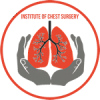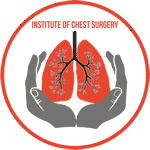What are the Different Stages of Esophageal Cancer?
Esophageal cancer is a formidable disease that affects the esophagus, the hollow tube that carries food and liquids...
+919999461292
MBBS | DNB (General Surgery, Gold Medalist) | DNB (Thoracic Surgery, Gold Medalist)
Thoracic & Lung Transplant Surgeon | Medanta – The Medicity, Gurugram

MBBS | DNB (General Surgery, Gold Medalist) | DNB (Thoracic Surgery, Gold Medalist)
Thoracic & Lung Transplant Surgeon | Medanta – The Medicity, Gurugram


Pneumothorax, commonly referred to as a collapsed lung, occurs when air leaks into the space between the lung and chest wall, causing the lung to collapse and resulting in a sudden onset of sharp chest pain and breathlessness. This condition can be spontaneous, without an obvious cause, or result from chest trauma or underlying lung disease. The most typical symptom of a pneumothorax is a sudden, sharp chest pain on one side followed by shortness of breath. Diagnosis is generally confirmed through a chest X-ray or CT scan, which can reveal the presence of air outside the lung.
Treatment for pneumothorax depends on its size and severity and ranges from observation for small, symptom-free cases to emergency interventions to remove the air and allow the lung to re-expand. In some instances, surgery may be required, especially for recurrent pneumothorax or those due to weak spots (blebs/bullae) in the lung tissue. Procedures like Video-Assisted Thoracoscopic Surgery (VATS) are minimally invasive options that not only treat the current collapse but also help prevent future episodes by addressing underlying lung pathology.
For those in need of expert medical advice or intervention for pneumothorax, Dr. Mohan Venkatesh Pulle is a renowned thoracic surgeon whose experience and surgical skill make him a trusted authority in the field.
See, in simple terms, there’s an air leak that happens in your lung, causing it to collapse partially or completely. Think of it like a balloon with a small hole – the air escapes and the balloon shrinks.
Yes, it is quite serious but perfectly treatable. The key is early detection and proper treatment. That’s why I always tell my patients to come immediately when they notice breathing difficulty.
See, depending on severity, we have different options. Sometimes we just observe, sometimes we need to insert a chest tube, and in some cases, we do VATS surgery. I’ll explain which is best suited for your condition.
Very good question! In our experience, the success rate is quite high – more than 98%. But see, each case is different. With proper care and following instructions, most patients recover completely.
Usually, for simple cases, 3-4 days is sufficient. But if we do VATS surgery, it might take 5-6 days. Don’t worry, we’ll ensure you’re completely stable before discharge.
You can resume all your activities after discharge. However, it should be gradual and incremental. Full sports maybe after 4-6 weeks, but first let me assess your recovery properly.
The most important precaution is “No smoking, No dust exposure”. In Hindi, we say it “Na dhool aur na dhuwa”. In smoking, neither active nor passive is allowed for life time. Other important things are good nutrition (proteinaceous diet) and regular breathing exercises which we’ll teach you. Also, keep emergency numbers handy, though you’ll rarely need them.
Office work can be resumed after discharge. However, I always suggest taking a break of 2-3 weeks from your busy office schedule and devote that time to your health, specifically nutrition and good physiotherapy. If your job involves heavy physical work, better to take 4 weeks off. It is very important to understand – “Health is the first priority & health is wealth”. Don’t worry, I’ll give proper medical certification for official purposes.
“Don’t worry about pain. We’ll give proper medications. Most patients manage well with regular painkillers. Pain typically improves significantly within a week.”
Most important is lifestyle modification. No smoking, regular exercise after recovery, and maintaining good lung health. We’ll guide you through proper prevention steps.
If you experience sudden breathing difficulty, chest pain, or excessive coughing, contact us immediately. But don’t panic, such complications are quite rare.
First follow-up after 2-3 days after discharge and then followed by 1 week. Later, you can go back to your own place. Thereafter, you can consult me after 3 months. Don`t worry, you can contact me in between whenever necessary. I am always there to help you.
See, with modern techniques, scars are very minimal. We use special methods to ensure best cosmetic results. Over time, they become hardly visible.
After stitches removal, yes. But for the first week, only sponge baths. Keep the surgical area clean and dry. We’ll give detailed instructions before discharge.
Note: “Remember, my team and I are always available for any queries. Don’t hesitate to contact us if you have any concerns. Recovery is a journey we’ll complete together.”
Esophageal cancer is a formidable disease that affects the esophagus, the hollow tube that carries food and liquids...
Esophageal cancer is a formidable and often challenging disease that affects the esophagus, the muscular tube that carries...
Esophageal cancer is a challenging and potentially life-threatening condition that requires timely diagnosis and appropriate treatment. When esophageal...
Esophageal cancer is a serious and potentially life-threatening disease that affects the esophagus, the muscular tube that carries...
Esophageal cancer is a formidable adversary that can silently develop within the esophagus, the muscular tube connecting the...
Esophageal cancer is a serious and potentially life-threatening condition that affects the esophagus, the muscular tube responsible for...
MBBS | DNB (General Surgery, Gold Medalist) DNB (Thoracic Surgery, Gold Medalist)
Thoracic & Lung Transplant Surgeon
Medanta – The Medicity, Gurugram
An esteemed thoracic surgeon, excels in minimally invasive procedures (VATS & Robotic surgery) for both benign and malignant lung conditions. With a stellar academic background and international training, he is dedicated to offering compassionate and expert patient care.

Website designed and Developed with ❤️ by GigaWebZone
Copyright © 2023 All rights reserved.
WhatsApp us